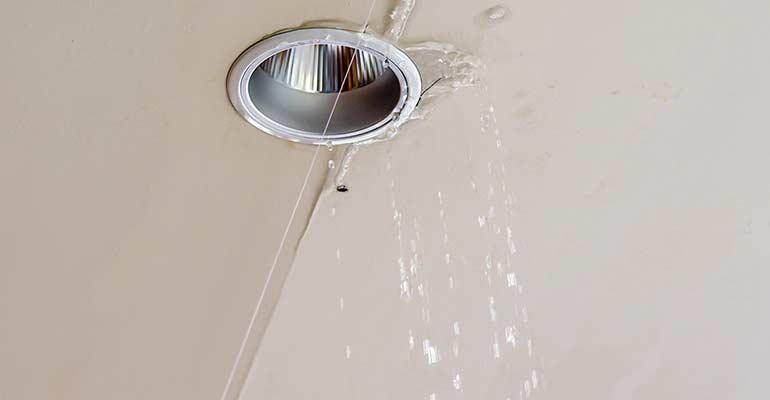On this page below you can discover a bunch of professional news around How to Find Water Leaks.

Leaks not only cause waste of water but can also trigger unnecessary damages to your home and advertise undesirable organic development. However, water leaks might go undetected because most of the pipework in our residence is hidden. By recognizing and looking for daily circumstances that cause leakages, you can protect your house from future leaks as well as unnecessary damages. Today, we will check out six leak causes that might be causing your pipelines to trickle.
Intruding roots
A lot of water leaks begin outside the house as opposed to inside it. If you see an abrupt decrease in water stress, say in your faucet, take some time to head out and analyze your yard. You may notice wet spots or sinkholes in your yard, and that could suggest that tree origins are attacking water lines causing water to leak out. You can have your plumber look for intrusion, particularly if you have trees or shrubs near your building.
Rusty water supply
As time passes by, your plumbing system ages and also deterioration such as rust may begin eating away the pipes. This could be the reason for discoloration or bending on your pipes. This asks for an evaluation with your plumber promptly. If our plumbing system is old, think about changing the pipelines given that they are at a greater risk of rust than the more recent models.
Defective Pipe Joints
The point at which your pipes connect is regularly the weakest web link in the waterline. Pipe joints can degrade over time, causing water leaks. Regrettably, the majority of pipeline joints are not easily visible. If you have loud pipelines that make ticking or banging sounds, particularly when the warm water is turned on, your pipeline joints are most likely under a great deal of pressure. It is suggested to have your plumber examine your system annually.
Instant temperature modifications.
Extreme temperature level adjustments in our pipes can trigger them to broaden and also acquire all of a sudden. This expansion and contraction might trigger cracks in the pipelines, particularly if the temperature are listed below freezing.
Poor Water Connectors
Sometimes, a leakage can be brought on by loose tubes and pipelines that provide your appliances. Typically, shifting is what causes the loose water Connections. You may find in the case of a washing machine, a hose might spring a leakage as a result of drinking throughout the spin cycle. In case of a water links leakage, you may discover water running straight from the supply line or puddles around your devices.
Clogged Drains
Blocked drains pipes might be bothersome as well as inconveniencing, but they can often end up causing an overflow causing break pipelines. Maintain removing any type of materials that might drop your drains that can block them to prevent such hassles.
All the above are reasons for leaks however not all water leaks result from plumbing leakages; some leakages could come from roofing leaks. All leaks ought to be repaired right away to prevent water damage.
Leaks not just trigger waste of water but can likewise create unneeded damages to your house and also promote unwanted organic growth. By looking as well as recognizing for daily circumstances that trigger leakages, you can shield your house from future leaks and unnecessary damages. Today, we will certainly look at six leakage triggers that may be creating your pipelines to trickle.
At times, a leakage can be created by loosened hose pipes and also pipes that provide your devices. In situation of a water connections leakage, you may notice water running straight from the supply line or puddles around your devices.
How To Check For Water Leak In Your Home
How To Check for Leaks
The average household's leaks can account for nearly 10,000 gallons of water wasted every year and ten percent of homes have leaks that waste 90 gallons or more per day. Common types of leaks found in the home are worn toilet flappers, dripping faucets, and other leaking valves. These types of leaks are often easy to fix, requiring only a few tools and hardware that can pay for themselves in water savings. Fixing easily corrected household water leaks can save homeowners about 10 percent on their water bills.
To check for leaks in your home, you first need to determine whether you're wasting water and then identify the source of the leak. Here are some tips for finding leaks:
Take a look at your water usage during a colder month, such as January or February. If a family of four exceeds 12,000 gallons per month, there are serious leaks.
Check your water meter before and after a two-hour period when no water is being used. If the meter changes at all, you probably have a leak.
Identify toilet leaks by placing a drop of food coloring in the toilet tank. If any color shows up in the bowl after 10 minutes, you have a leak. (Be sure to flush immediately after the experiment to avoid staining the tank.)
Examine faucet gaskets and pipe fittings for any water on the outside of the pipe to check for surface leaks.
Undetected water leaks can happen without the home or business owner even realizing. If you suspect a water leak, but not able to find the source. It is time to contact a professional water leak detection service, The Leak Doctor.
How To Find a Water Leak In Your Home
https://www.leakdoctor.com/blog/How-To-Check-For-Water-Leak-In-Your-Home_AE197.html

Do you really like reading up on Common Water Leaks In House? Put feedback down below. We will be interested to see your feelings about this entry. Hoping that you visit us again before long. Sharing is good. You never know, you will be helping someone out. Thank you for your time. Please check our website back soon.
Plumbing SOS? Reach out!